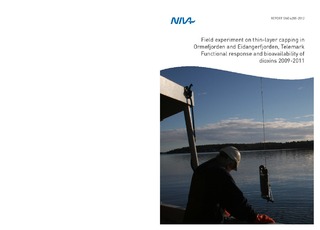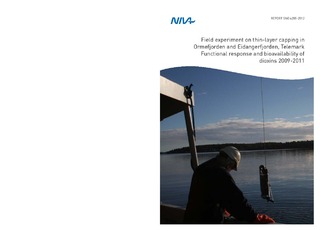| dc.contributor.author | Schaanning, M. | nb_NO |
| dc.contributor.author | Allan, I. | nb_NO |
| dc.contributor.other | Schaanning, M. - Project manager | nb_NO |
| dc.coverage.spatial | Telemark | nb_NO |
| dc.date.accessioned | 2014-08-01T10:57:00Z | |
| dc.date.available | 2014-08-01T10:57:00Z | |
| dc.date.issued | 2012 | nb_NO |
| dc.identifier | 6285 | nb_NO |
| dc.identifier.isbn | 978-82-577-6020-5 | nb_NO |
| dc.identifier.issn | 1894-7948 | nb_NO |
| dc.identifier.uri | http://hdl.handle.net/11250/215761 | |
| dc.description.abstract | As part of a research project to examine the effects of thin capping, test fields were established at 30 and 100 m depth in the outer Grenlandfjord in September 2009. One field was treated with crushed limestone, one field was treated with clay dredged from a nearby location and two fields were treated with a mixture of dredged clay and activated carbon (AC). Biogeochemical fluxes, release of chlororganic compounds to the overlying water and uptake in two sediment-living organisms were investigated in box-core samples transferred from test fields and reference locations to the mesocosm laboratory at Solbergstrand in October 2009 and November 2010. Oxygen and nitrogen nutrient fluxes were not significantly affected by capping. Anomalous fluxes of phosphate and silicate were observed in the first investigation and primarily in sediments treated with the limestone material. In all boxes transferred in 2009 and in boxes from clay and AC treatments transferred in 2010, bioaccumulation and leakage of dioxins (PCDD/F-TEQ) was 67% - 91% lower than at the uncapped reference fields. At the two fields treated with limestone gravel and dredged clay without activated carbon, however, cap efficiencies had decreased to less than 46%. It was concluded that for the cap thicknesses of <5 cm applied in the Grenland field experiment, AC-amendment was required to obtain satisfactory cap performance. | nb_NO |
| dc.description.sponsorship | Norwegian Research Council, Climate and Pollution Agency, Norsk Hydro and others | nb_NO |
| dc.publisher | Norsk institutt for vannforskning | nb_NO |
| dc.relation.ispartofseries | NIVA-rapport;6285 | nb_NO |
| dc.rights | Navngivelse-IkkeKommersiell-DelPåSammeVilkår 3.0 Norge | nb_NO |
| dc.rights.uri | http://creativecommons.org/licenses/by-nc-sa/3.0/no/ | nb_NO |
| dc.subject | sediment remediation | nb_NO |
| dc.title | Field experiment on thin-layer capping in Ormefjorden and Eidangerfjorden, Telemark. Functional response and bioavailability of dioxins 2009-2011 | nb_NO |
| dc.type | Research report | nb_NO |
| dc.rights.holder | Norsk institutt for vannforskning/Norwegian institute for water research | nb_NO |
| dc.subject.nsi | VDP::Matematikk og naturvitenskap: 400 | nb_NO |
| dc.source.pagenumber | 31 + appendix | nb_NO |
| dc.subject.keyword | tiltak | nb_NO |
| dc.subject.keyword | dioksiner | nb_NO |
| dc.subject.keyword | biotilgjengelighet | nb_NO |
| dc.subject.keyword | felteksperiment | nb_NO |
| dc.subject.keyword | remediation | nb_NO |
| dc.subject.keyword | dioxins | nb_NO |
| dc.subject.keyword | bioavailability | nb_NO |
| dc.subject.keyword | field experiment | nb_NO |
| dc.relation.project | 27387 27310 | nb_NO |


